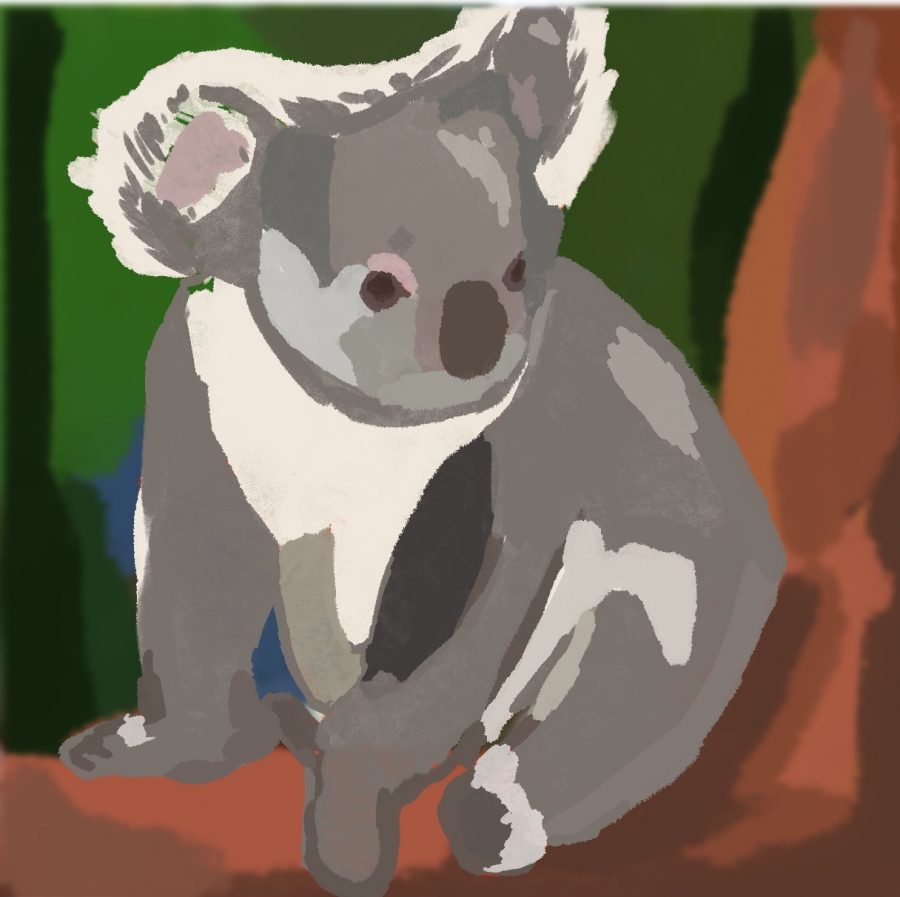Global News: Majestic Marsupials in Danger
October 22, 2021
After historic brush fires, prolonged drought, and land clearing, the Australian Koala population is in serious danger for the first time in recent history. Even before the most recent brush fires in Australia, the International Union for the Conservation of Nature had Koalas classified as vulnerable. Could this threat prove too much for the globally famous marsupials, or will our furry friends find a way to keep their population and reputation intact?
Senior Alleah Wassertail is a frequent visitor of the San Diego Zoo where they have 20 Koalas. She said, “Koalas are definitely one of my favorite animals to visit,” she said. Wassertail continued, “I really can’t imagine an animal as popular as Koalas going extinct. I think it’s important to do as much as possible to keep them at healthy numbers and safe for future generations,” Wassertail said (animals.sandiegozoo.org).
The principal issue facing Koalas in their natural habitat is complications from brush fires. As the global climate situation continues to worsen, Australia is one of the places in the world to see the most harm. According to the Australian government, brush fires have always been a factor on the continent; however, in recent years, they have been becoming increasingly disastrous. From 2019-2020, Australia was ravaged by massive brush fires encompassing a majority of the north and west coasts of the country. More than 46 million acres were ablaze and scientists projected that roughly one billion animals were killed as a result of the fires. In New South Wales (a state in Australia) alone, more than 30,000 Koalas were killed and many times that were displaced from their habitat due to the most recent fires (aph.gov.au).
A longer standing issue facing Koalas is deforestation. Since 1750, 27 percent of rainforest, 19 percent of open forest, 11 percent of woodland forest, and 28 percent of mallee forest have been lost to deforestation, according to the Accuweather website. Such a large percent of natural habitat being lost is bound to have a massive impact on many species’ survival rates. Some laws protecting koala habitat were even removed leading to greater rates of deforestation. In some regions of New South Wales, areas the size of 14 football fields were being cleared daily (accuweather.com).
Already known for having some of the most difficult conditions for survival in the world, Australia has added humans to the list of things species have to be worried about. Human expansion in the country is a large ecological issue, the building of roads divides ecosystems which used to be connected. After large efforts attempting to get the Australian government to act on the issue, a study found that of 34,000 admissions to a wildlife hospital, 11,000 were a result of cars. Other studies have come to similarly staggering conclusions (journals.plos.org).
Australia has the world’s highest rate of mammal extinction and it appears that Koalas are trending in a similar direction. Without direct action soon, one of the most popular and adored species in the entire world will meet its end. The effect which humans have on the global ecosystem becomes more easily apparent as time passes. If species as prominent as Koalas can fail to get the aid they need, there is little hope for the thousands of other species which are at risk. We cannot allow species to be lost to history books and forgotten for all time. There is a time for action and the time is now.


